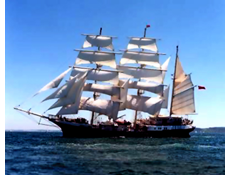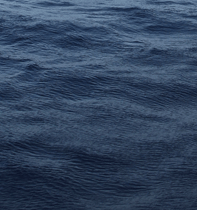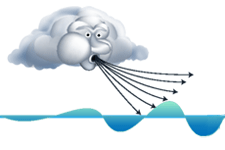2. Prevailing Winds
Winds can vary considerably from week to week and season to season, but over longer periods - months and seasons - the wind will usually blow more often from one direction than from any other.
A wind that consistently blows more from one direction is known as the prevailing wind. It determines the direction of the mean wind driven current in a particular area.
Monthly maps of average wind speed and direction can tell you the strength and direction of the prevailing winds in different regions. If you read them carefully they can also tell you something about how consistent that wind is.
From wind to currents
What happens when the wind blows across the ocean surface? The surface roughens - small waves are generated, and after a while, if the wind carries on blowing, larger waves.
There is a transfer of momentum and energy from the air to the water. How much depends on the wind speed, the length of time the wind blows and the distance over which it can blow.
The force per unit area that the wind exerts on the surface of the ocean is known as the wind stress. Most of the wind stress goes into creating surface waves, but if the wind blows from the same direction for some time, it will set up a local surface current in the down-wind direction.
Where are the prevailing winds and which direction do they blow?
There are three prevailing wind belts in each hemisphere. You should be able to identify some of these in the maps above.
1. Look carefully at the maps and try to identify these wind belts.
- At what latitude do you find them?
- Which direction does the prevailing wind come from in each belt?
2. Which of the two wind belts have the most consistent wind direction?
Putting a spin on things - the Coriolis effect
Because of the Earth's shape and rotation, the direction of the current will be slightly to the right of the wind in the northern hemisphere and slightly to the left of the wind in the southern hemisphere. This is known as the 'Coriolis effect' (or Coriolis Force). The Coriolis Effect is zero at the equator and increases with increasing latitude.
How strong a current will you get from the wind?
A wind that blows for 3-4 days at about 20 knots (10 m s-1) will set up a current of about:
(a) 2 knots (1 m s-1)
(b) 0.4 knots (20 cm s-1)
(c) 0.2 knots (10 cm s-1)
(d) 10 knots (5 m s-1)





